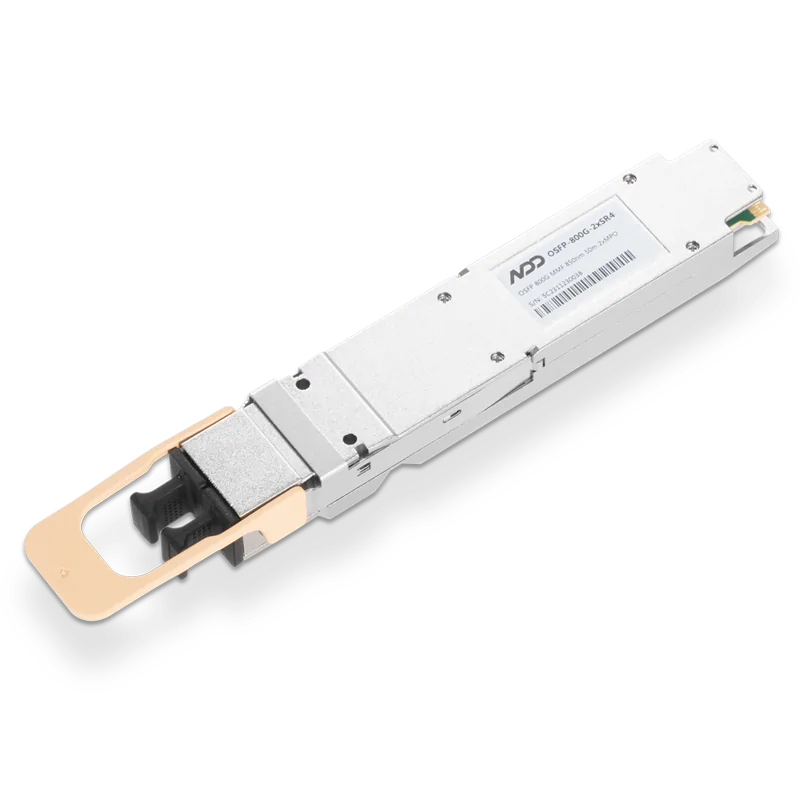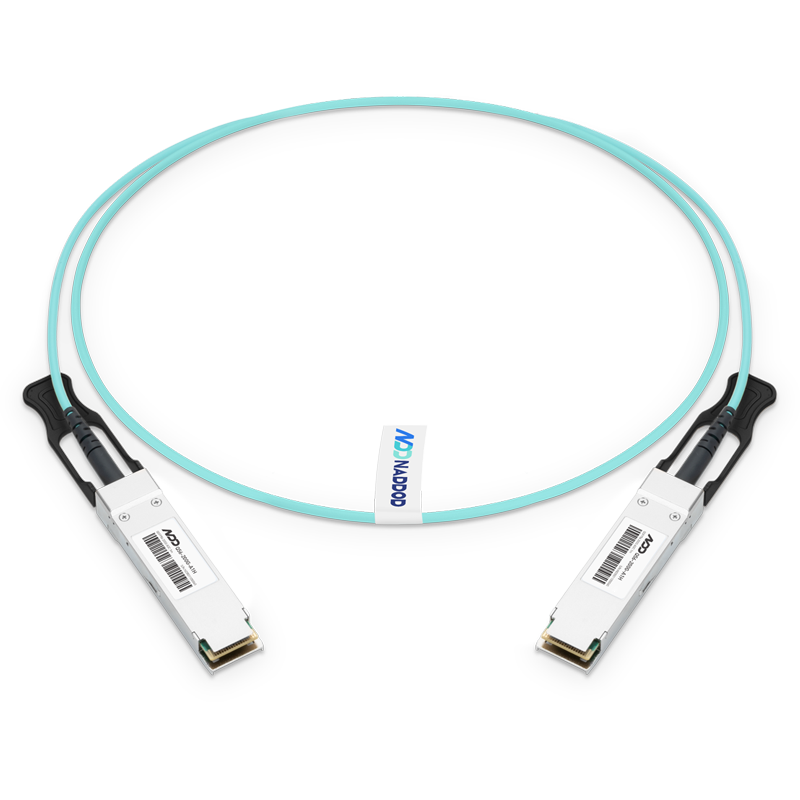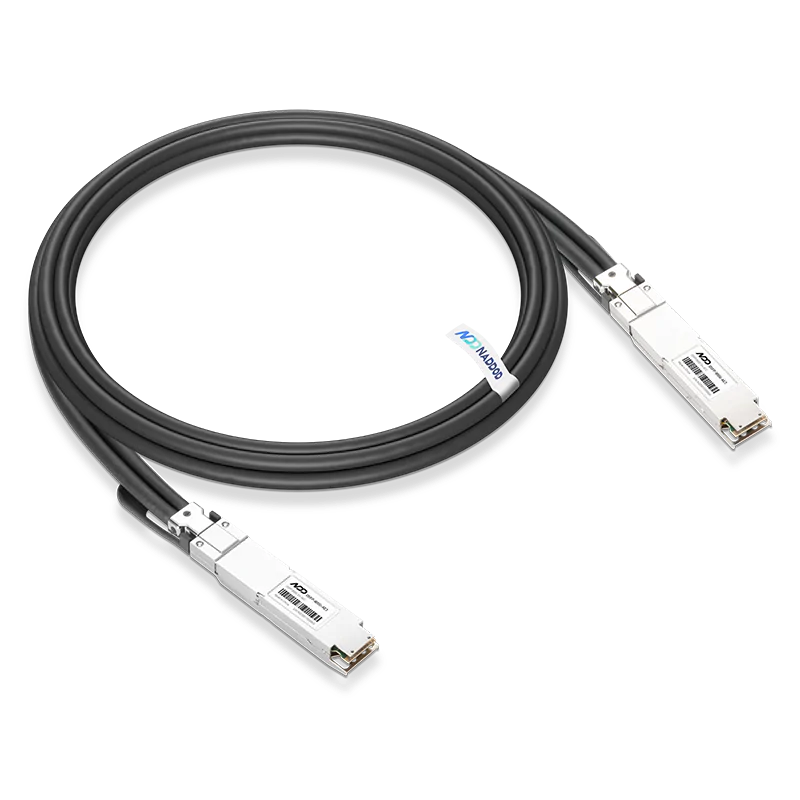1. Working Principle of Optical Module
As an essential component of optical fiber communication, optical modules are optoelectronic devices that facilitate the conversion between optical and electrical signals during the transmission process.
Operating at the physical layer of the OSI model, optical modules are core devices in optical fiber communication systems. They mainly consist of optoelectronic components (such as optical transmitters and receivers), functional circuits, and optical interfaces, aiming to achieve the functionalities of optical-to-electrical and electrical-to-optical signal conversion in optical fiber communication. The working principle of optical modules is illustrated in the diagram shown in the Optical Module Working Principle Diagram.
The transmitting interface inputs electrical signals of a certain bit rate, which are then processed by internal driver chips. Subsequently, the driver semiconductor laser (LD) or light-emitting diode (LED) emits modulated optical signals at the corresponding rate. After transmission through the optical fiber, the receiving interface converts the optical signals into electrical signals using a photodetector diode and outputs electrical signals of the corresponding bit rate after pre-amplification.

2. The appearance and structure of Optical Module
The types of optical modules are diverse, and their appearances vary. However, their basic structural components typically include the following parts, as illustrated in the diagram:

|
Structure |
Explanation |
|
1.Dust cap |
The dust cap is used to protect the optical fiber connector, the fiber adapter, the optical interface of the optical module, and the ports of other devices from external environmental pollution and physical damage. |
|
2.Boot |
The boot ensures a secure connection between the optical module and the device's optical interface, and it is only present on optical modules packaged in SFP format.
|
|
3.Label |
The label is used to indicate key parameters of the optical module and manufacturer information. |
|
4.Connector |
The connector is used for the connection between the optical module and the circuit board, signal transmission, and providing power to the optical module. |
|
5.Housing |
The housing protects internal components, mainly available in two types: 1*9 housing and SFP housing. |
|
6.Receiver Interface (Rx) |
The optical fiber receiver interface. |
|
7.Transmitter Interface (Tx) |
The optical fiber transmitter interface. |
|
8.Latch |
The latch is used for inserting and removing the optical module. To facilitate identification, the latch for different wavelength bands also varies in color. |
3. What are the key performance indexes of Optical Modules?
How do we measure the performance indicators of optical modules? We can understand the performance indicators of optical modules from the following aspects.
3.1 Optical Module Transmitter
Average Optical Power
Average optical power refers to the optical power outputted by the optical module's transmitter under normal working conditions, which can be understood as the intensity of light. The transmitted optical power is related to the proportion of "1"s in the transmitted data signal; the more "1"s, the greater the optical power. When the transmitter sends a pseudo-random sequence signal, where "1"s and "0"s are roughly equal, the measured power is the average optical power, measured in W or mW or dBm. W or mW are linear units, while dBm is a logarithmic unit commonly used in communication to indicate optical power.
Extinction Ratio
The extinction ratio refers to the minimum ratio of the average optical power emitted by the laser under full modulation conditions when transmitting all "1"s to the average optical power emitted when transmitting all "0"s. It is measured in dB. As shown in Figure 1-3, when converting electrical signals into optical signals, the laser in the optical module emits light based on the input electrical signal's data rate. The average optical power when transmitting all "1"s represents the average power emitted by the laser, while the average optical power when transmitting all "0"s represents the average power when the laser is not emitting light. The extinction ratio characterizes the ability to distinguish between "0" and "1" signals, thus serving as a measure of the laser's operational efficiency. The typical minimum range for the extinction ratio is between 8.2dB to 10dB.

Central Wavelength of Optical Signal
In the transmitted optical spectrum, the wavelength corresponding to the midpoint of the segment with 50% maximum amplitude. Due to process and production variations, different types of lasers or the same type of laser may have differences in central wavelength. Even the same laser may have different central wavelengths under different conditions. Generally, manufacturers of optical components and modules provide users with a parameter, the central wavelength (e.g., 850nm), which is typically specified as a range. Currently, the commonly used central wavelengths for optical modules are primarily in three bands: the 850nm band, the 1310nm band, and the 1550nm band.
Why are these three bands defined? This is related to the optical fiber loss. Through continuous experimental research, it has been found that the optical fiber loss generally decreases as the wavelength increases. The loss is minimal around 850nm, increases between 900 ~ 1300nm, decreases again at 1310nm, and reaches its lowest at 1550nm. Loss increases beyond 1650nm. Therefore, 850nm is referred to as the short wavelength window, while 1310nm and 1550nm are the long wavelength windows.
3.2 Optical Module Receiver
Overload Optical Power
Also known as saturation optical power, it refers to the maximum average optical power that the receiver component of the optical module can receive under a certain bit error rate (BER=10-12) condition. It is measured in dBm.
It is important to note that the photodetector may experience optical current saturation under strong light irradiation. After this phenomenon occurs, the detector needs some time to recover. During this time, the receiver sensitivity decreases, and the received signal may be misjudged, resulting in bit errors. In simple terms, exceeding the overload optical power may cause damage to the equipment. Therefore, strong light exposure should be avoided as much as possible during use to prevent exceeding the overload optical power.
Receiver Sensitivity
Receiver sensitivity refers to the minimum average input optical power that the receiver component of the optical module can receive under a certain bit error rate (BER=10-12) condition. If the transmitted optical power refers to the intensity of light emitted by the transmitter, then the receiver sensitivity refers to the intensity of light that the optical module can detect. It is measured in dBm.
In general, the higher the rate, the worse the receiver sensitivity, meaning the minimum received optical power is larger, and the requirements for the receiver components of the optical module are higher.
Received Optical Power
Received optical power refers to the range of average optical power that the receiver component of the optical module can receive under a certain bit error rate (BER=10-12) condition. It is measured in dBm. The upper limit of received optical power is the overload optical power, while the lower limit is the maximum value of receiver sensitivity.
In summary, when the received optical power is less than the receiver sensitivity, it may not be possible to receive signals normally because the optical power is too weak. When the received optical power is greater than the overload optical power, it may also not be possible to receive signals normally because of the presence of bit errors.
3.3 Comprehensive Performance Indicators
Interface Rate
The maximum electrical signal rate that the optical device can carry without error transmission. Ethernet standards specify rates such as 125Mbit/s, 1.25Gbit/s, 10.3125Gbit/s, and 41.25Gbit/s.
Transmission Distance
The transmission distance of an optical module is mainly limited by loss and dispersion. Loss occurs because the light energy dissipates due to medium absorption, scattering, and leakage during optical fiber transmission, dissipating energy at a certain rate as the transmission distance increases. Dispersion occurs because electromagnetic waves of different wavelengths propagate at different speeds in the same medium, causing components of different wavelengths of the optical signal to arrive at the receiving end at different times due to cumulative transmission distances, resulting in pulse broadening and inability to distinguish signal values.
In terms of optical module dispersion limitation, its limitation distance is much greater than the loss limitation distance, so it can be ignored. The loss limitation can be estimated using the formula: Loss-limited distance = (transmitted optical power - receiver sensitivity) / optical fiber attenuation. The fiber attenuation is strongly correlated with the actual fiber selected.
As technology continues to evolve and innovate, optical modules/AOC/DAC are expected to continue leading the development in the field of networking, providing robust support for the digital era's network demands. As a professional module manufacturer, NADDOD produces 1G-800G optical modules. We welcome everyone to learn about and purchase our products.

 800GBASE-2xSR4 OSFP PAM4 850nm 50m MMF Module
800GBASE-2xSR4 OSFP PAM4 850nm 50m MMF Module- 1Optical Module Classification and Common After-Sales FAQs
- 2High Performance GPU Server Hardware Topology
- 3Igniting the Future of Data Centers with 400G Optical Modules
- 4Vera Rubin Superchip - Transformative Force in Accelerated AI Compute
- 5NVIDIA GB300 Deep Dive: Performance Breakthroughs vs GB200, Liquid Cooling Innovations, and Copper Interconnect Advancements.






































